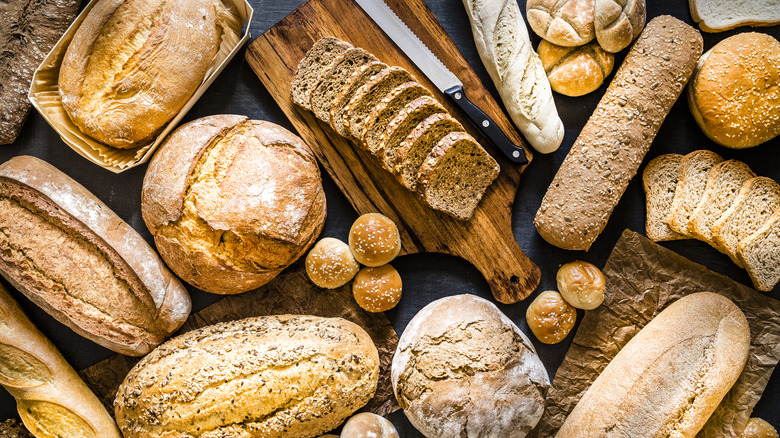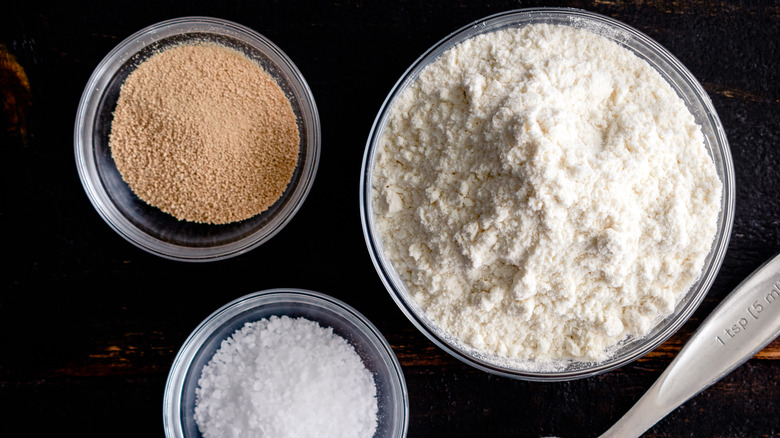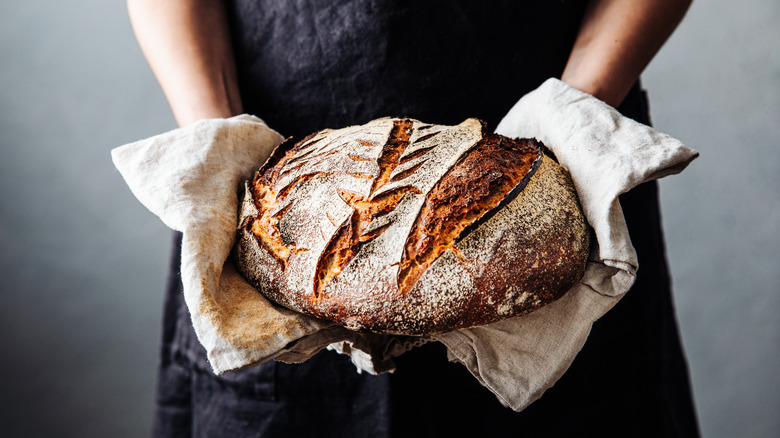The Critical Salt Mistake You Need To Avoid When Baking Bread
Baking bread provides you with countless possibilities for delicious meals. You can use your homemade bread to make a sandwich, as a roll for a complementary side to a meaty dish, or pop it in your toaster oven for some delicious breakfast toast. No matter how you intend to use your homemade bread, it should have optimal flavor and texture. To ensure your homemade bread tastes great and has a wonderful texture, add salt when making your dough. The salt will give your bread a flavorful boost while making the gluten strong enough to turn your bread delightfully chewy. However, you may regret it if you add too much salt directly on top of your yeast when making your dough.
Yeast needs salt in bread dough so that it can rise properly. When you put yeast and water in a mixing bowl, the yeast will use the water to create carbon dioxide bubbles, which causes the yeast to expand and make your dough rise. By adding salt to compete with the yeast for absorbing the water, it helps control how the yeast ferments so your dough rises properly. However, if you add too much salt (particularly on top of your yeast which can kill the yeast), this process will be disrupted and create an undesirable outcome. Adam Fisher, COO of Oceans Flavor Foods, explained to Baking Business, "Too much salt can slow down the yeast activity, not allowing enough expansion." This means that your bread dough won't rise properly.
How salt can kill your yeast
While adding too much salt along with yeast to your dough mixture can result in killing the yeast, the salt is most likely to kill your yeast when you leave it directly on top of fresh yeast for several minutes or longer. Salt is a hygroscopic substance, meaning that it can absorb water. When you add salt directly on top of yeast in a mixing bowl with water (especially a high concentration of salt), the salt will rob the yeast of water to absorb, causing a fatal chemical reaction in the yeast called osmotic stress in which the yeast's cells disintegrate.
The chemical process of salt killing yeast actually takes quite a bit of time. The salting mistake that you can make that will lead to your yeast dying is letting the salt sit directly on top of your yeast for more than a few minutes. This is why if you have salt sitting on your yeast, you should knead your dough immediately to prevent your yeast from dying.
How to effectively mix salt and yeast when making bread dough
Since you need to add salt and yeast to make flavorful, chewy bread dough, but you need to avoid the salt coming into direct contact with the yeast to prevent the yeast from dying, there is a simple bread baking hack to incorporate both in your dough ingredient mixture effectively. When making your bread dough, simply add your yeast on one side of the bowl, then add your salt on the opposite side of the bowl. This will prevent the salt from touching your yeast and killing it.
When you're ready to mix all of your dough ingredients, just blend dried yeast with water, then mix it into your salt and flour. If you're working with fresh yeast, blend it nicely into your flour, then mix it in your salt and water. After creating a flour and salt mixture, or a salt, flour, and yeast mixture, and ensuring that these mixtures are well blended, the flour will guard the salt and yeast from each other. Then you can safely add water to the mixtures without worrying about the salt killing your yeast.


